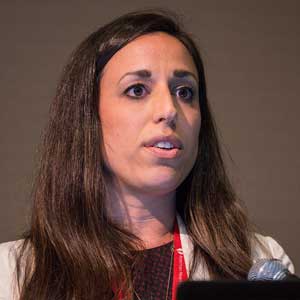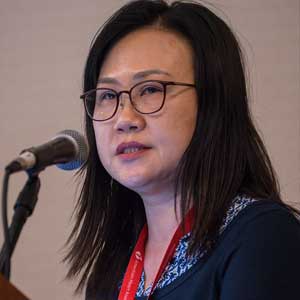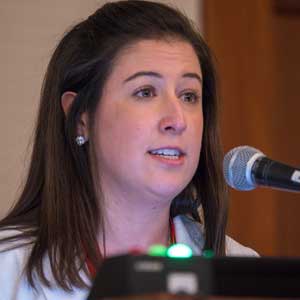Science News
International Stroke Conference 2019
Nursing Symposium & Pre-Con Symposia: Feb. 5, 2019
Sessions: Feb.6–8, 2019
Honolulu, Hawaii
Wednesday's Selected Science
SHINE Trial Results
Louise McCullough, MD, vice chair for ISC 2019, interviews Karen Johnston, MD, principal investigator of the SHINE trial about the results and their significance for patients and clinicians. (Jump to the SHINE science)
RIGHT-2 Interview with PI Philip Bath, MD, DSc
Louise McCullough, MD, PhD interviews Philip Bath, MD, DSc, principal investigator of the RIGHT-2 trial, about the prehospital administration of TNG in ultra-acute stroke. (Jump to the RIGHT-2 Science)

Stroke Hyperglycemia Insulin Network Effort (SHINE) Trial Primary Results
Karen C Johnston | University of Virginia, Charlottesville, VA
- RESULTS: 90-day functional stroke outcomes were not improved with IV insulin therapy for hyperglycemia in AIS compared to standard insulin injections.
- NEW! Further details on SHINE trial
- Johnston's Abstract (new window)(link opens in new window)
- Johnston's Presentation Slides (PDF)
- Video Discussion (opens in new window) with Karen Johnston and Louise McCollough (link opens in new window)

Glyceryl Trinitrate for Pre-hospital Ultra-acute Stroke: Main Results From the Rapid Intervention With Glyceryl Trinitrate in Hypertensive Stroke Trial-2 (RIGHT-2)
Philip M Bath | University of Nottingham, Nottingham, United Kingdom
- RESULTS: Transdermal glyceryl trinitrate compared to sham, started by paramedics to lower BP before hospital admission and continued over the next 3 days, in very early presumed stroke did not improve stroke outcomes and may have worsened outcomes for those with hemorrhagic stroke.
- NEW! Further details on RIGHT-2 trial
- Bath's Abstract (new window)(link opens in new window)
- Bath's Presentation Slides (PDF)
- Published in The Lancet: Prehospital transdermal glyceryl trinitrate in patients with ultra-acute presumed stroke (RIGHT-2): an ambulance-based, randomised, sham-controlled, blinded, phase 3 trial
- Video Discussion (opens in new window) with Philip Bath, Louise McCullough(link opens in new window)
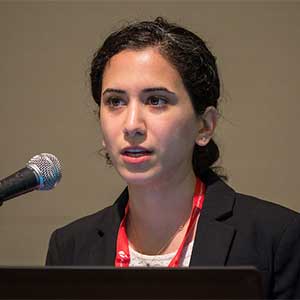
Increasing Rate of Stroke From Infective Endocarditis Related to Opioid Abuse in the U.S.
Setareh Salehi Omran | Feil Family Brain and Mind Research Institute and Department of Neurology, Weill Cornell Medical College, New York, NY
- RESULTS: The increasing U.S. rate of stroke hospitalizations since 2008 from opioid-related infective endocarditis appears to align with the increasing opioid epidemic.
- Omran's Abstract (new window)
- Omran's Presentation Slides (PDF)
- Publication in Stroke: National Trends in Hospitalizations for Stroke Associated With Infective Endocarditis and Opioid Use Between 1993 and 2015 (new window)(link opens in new window)
- AHA Press Release: Opioid epidemic fueling a rise in infection-related stroke

Outcomes After Endovascular Stroke Therapy in High Versus Low Volume Centers
Sunil A Sheth | UT Health, McGovern School of Medicine, Houston, TX
- RESULTS: Clinical outcomes for endovascular stroke therapy improved for both high and lower volume centers with persistently better performance in the higher volume centers.
- Sheth's Abstract (new window)(link opens in new window)
- Sheth's Presentation Slides (PDF)
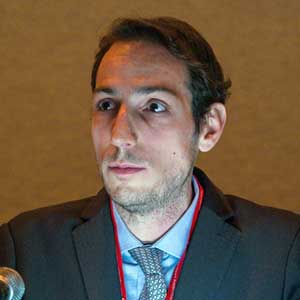
Apolipoprotein E and Intracerebral Hemorrhage: A Trans-Ethnic Meta-Analysis
Sandro Marini | Massachusetts General Hospital, Boston, MA
- RESULTS: The genetic risk for lobar ICH from the Apolipoprotein E epsilon (ε4 and ε2) alleles, varied by race and ethnicity.
- Marini's Abstract (new window)(link opens in new window)
- Marini's Presentation Slides (PDF)

Apoptosis Signal-Regulating Kinase 1 (ASK1) is a Novel Master Molecular Switch Controlling Microglia/Macrophage Reactions That Impact Short- and Long-Term Stroke Outcomes
Yejie Shi | University of Pittsburgh, Pittsburgh, PA
- RESULTS: In mice, ASK1 activation promoted ischemia/reperfusion brain injury and inflammation by leading to a neurotoxic phenotype by microglia /macrophages.
- Shi's Abstract (new window)
- Shi's Presentation Slides (PDF)

Circulating Peripheral Factors Induce Age-Related Epigenetic Changes in Microglia Which Induces a Primed Phenotype
Edward C Koellhoffer | UT Health McGovern Medical School, Houston, TX
- RESULTS: Circulating peripheral factors cause age-related epigenetic changes in microglia, suggesting targets for improving the response to neurological injury.
- Koellhoffer's Abstract (new window)(link opens in new window)
- Koellhoffer's Presentation Slides (PDF)

Stroke Impairs Epithelial Microfold Cells in Intestinal Peyer's Patches
Juneyoung Lee | UT Health Houston, Houston TX
- RESULTS: The number of Peyer's Patches and microfold (M) cells in the mouse small intestine were decreased in ischemic stroke, offering new clues into the impact of stroke on lymphatic small intestine tissue.
- Lee's Abstract (new window)(link opens in new window)
- Lee's Presentation Slides (PDF)

Cerebral Microbleeds and the Effect of Anticoagulation on Outcomes in 3699 Patients With Embolic Strokes of Undetermined Source: An Exploratory Analysis of the NAVIGATE ESUS Trial
Ashkan Shoamanesh | McMaster University, Hamilton, ON, Canada
- RESULTS: Cerebral microbleeds in embolic strokes with an undetermined source indicated had an increased risk for recurrent ischemic stroke, intracerebral hemorrhage (ICH), and death, but did not appear to change the effects of anticoagulant therapy with rivaroxaban for ICH outcome.
- Shoamanesh's Abstract (new window)(link opens in new window)
- Shoamanesh's Presentation Slides (PDF)

Dual Antiplatelet Therapy Using Cilostazol for Secondary Stroke Prevention in High-risk Patients: The Cilostazol Stroke Prevention Study for Antiplatelet Combination (CSPS.com)
Kazunori Toyoda | National Cerebral and Cardiovascular Center, Suita Osaka, Japan
- RESULTS: High-risk patients given long-term cilostazol with aspirin or clopidogrel for secondary stroke prevention had less risk of an ischemic stroke recurrence than patients who received clopidogrel or aspirin alone.
- Toyoda's Abstract (new window)(link opens in new window)
- Toyoda's Presentation Slides (PDF)

Interleukin 4 Improves White Matter Repair After Stroke By Promoting Oligodendrocyte Differentiation
Xiaoming Hu | University of Pittsburgh, Pittsburgh, PA
- RESULTS: IL-4 promoted white matter healing and oligodendrogenesis by activation of PPARγ in mice.
- Xu's Abstract (new window)(link opens in new window)
- Xu's Presentation Slides (PDF)

Audience members listen to a presentation on Wednesday at ISC19. See and share more photos from the conference.

Attendees shared ideas and made new friends at the Advance Practice Providers Luncheon on Wednesday.
Also published Wednesday
- Real-World Treatment Trends in Endovascular Stroke Therapy
Hamidreza Saber, et al. Stroke, 2018
- Results from DEFUSE 3 (Endovascular Therapy Following Imaging Evaluation for Ischemic Stroke)
Adam de Havenon, et al. Stroke, 2018
- DEFUSE 3 Non-DAWN Patients: A closer look at Late Window Thrombectomy Selection
Thabele M. Leslie-Mazwi, et al. Stroke, 2018
- Ischemic Core and Hypoperfusion Volumes Correlate With Infarct Size 24 Hours After Randomization in DEFUSE 3
Vaishnavi Rao, et al. Stroke, 2018
- Target: Stroke program demonstrates substantially improved outcomes in adherence to stroke care guidelines; phase III kicks off
AHA News Release
Thursday's Selected Science
MISTIE 3 Results
Bruce Ovbiagele, MD, MSc, MAS, MBA interviews Dan Hanley, MD and Issam Awad, MD, co-principal investigators of the MISTIE 3 trial about what the clinical and surgical results suggest for treating patients with ICH. (Jump to the MISTIE science)
ISPOT Results
Louise McCullough, MD, PhD interviews Nina Gentile, MD, principal investigator of iSPOT, about the purpose and results of the trial and how it relates to the SHINE trial presented on Wednesday. (Jump to the iSPOT science)
ISC19 Thursday Science Highlights
Louise McCullough, MD, PhD and Miguel Perez-Pinzon, PhD review select science presented on Day 2 of ISC 2019 in Honolulu.
Endovascular Therapy Outcomes in Large Core
Peter Panagos, MD interviews Amrou Sarraj, MD about his recent work on endovascular thrombectomy outcomes in large core, which he presented in multiple sessions for ISC 2019. (Jump to the EVT Large Core science)

MISTIE 3 Trial Results
Daniel F Hanley | Johns Hopkins University, Baltimore, MD
- RESULTS: At 1-year post-ICH, functional recovery was not improved when comparing the image-guided minimally invasive MISTIE procedure + alteplase to traditional medical therapy to treat intracerebral hemorrhage. It may reduce mortality, and more benefit was seen with a smaller residual volume.
- NEW! Further details on MISTIE 3 and MISTIE-III
- Hanley's Abstract (new window)(link opens in new window)
- Hanley's Presentation Slides (PDF)
- Publication in The Lancet: Efficacy and safety of minimally invasive surgery with thrombolysis in intracerebral haemorrhage evacuation (MISTIE III): a randomised, controlled, open-label, blinded endpoint phase 3 trial
- Video Discussion for MISTIE 3 (opens in new window)(link opens in new window)
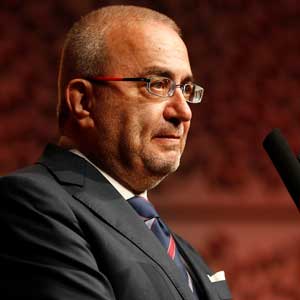
MISTIE III Surgical Results: Efficiency of Hemorrhage Removal Determines mRS
Issam A Awad | University of Chicago, Chicago, IL
- RESULTS: The more the volume of the ICH is reduced during surgery to treat intracerebral hemorrhage, the greater the likelihood of a good functional outcome, with ≤15 mL indicated as a threshold.
- NEW! Further details on MISTIE 3 and MISTIE-III
- Awad's Abstract (new window)(link opens in new window)
- Awad's Presentation Slides (PDF)
- Publication in The Lancet: Efficacy and safety of minimally invasive surgery with thrombolysis in intracerebral haemorrhage evacuation (MISTIE III): a randomised, controlled, open-label, blinded endpoint phase 3 trial
- Video Discussion for MISTIE 3 (opens in new window)(link opens in new window)
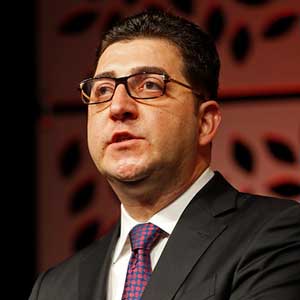
Endovascular Thrombectomy Outcomes in Large Core on CT Are Strongly Associated With Perfusion Core Volume and Time: Implications From Two Large Cohorts for Future Trials
Amrou Sarraj | UT Health Science Center At Houston, Houston, TX
- RESULTS: Clinical and safety outcomes for large core endovascular thrombectomy declined as the core volume increased and as the time since stroke onset increased.
- NEW! Further details on the EVT Outcomes in Large Core trial
- Sarraj's Abstract (new window)(link opens in new window)
- Sarraj's Presentation Slides (PDF)
- Video Discussion (opens in new window) with Sarraj(link opens in new window)
- Related presentations by Sarraj:
- Endovascular Thrombectomy May Be Safe and Effective in Patients With Large Core and Early Presentation (new window)(link opens in new window)
- Early Infarct Growth Correlates With Both Collateral Status and Clinical Outcomes After Thrombectomy (new window)(link opens in new window)
- Ischemic Core Volume Modifies the Association Between ASPECT Score and Clinical Outcome (new window)(link opens in new window)

Insights on Selected Procoagulation Markers and Outcomes in Stroke Trial (iSPOT) Primary Results
Nina T. Gentile | Temple University, Philadelphia, PA
- RESULTS: Intensive glucose control was associated with reduced tissue factor procoagulation
- NEW! Further details on the iSPOT trial
- Gentile's Abstract (new window)(link opens in new window)
- Gentile's Presentation Slides (PDF)
- Video Discussion (opens in new window) for Name

ApoE4 Disrupts Cerebrovascular Microcirculation and Undermines White Matter Integrity and Cognitive Function
Yorito Hattori | Weill Cornell Med, New York, NY
- RESULTS: The mechanisms for why the apolipoprotein E4 genotype may be a risk factor for subcortical white matter lesions is explored.
- Hattori's Abstract (new window)(link opens in new window)
- Hattori's Presentation Slides (PDF)

Amelioration of Ischemic Stroke Damage Through Inhibition of Interleukin-6 Signaling With Tocilizumab Requires Sex Specific Dosing
Jacob Hudobenko | UT Health Science Center at Houston, Houston, TX
- RESULTS: IL-6R expression was higher following a stroke in aged female mice and in human female plasma. Tocilizumab reduced brain atrophy, mortality, and behavioral deficits in aged males but not for aged females required at the same dose.
- Hudobenko's Abstract (new window)(link opens in new window)
- Hudobenko's Presentation Slides (PDF)
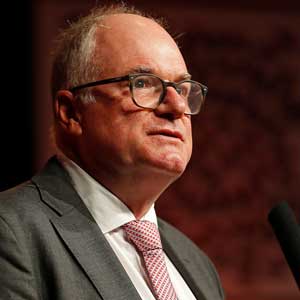
Main Results of the Enhanced Control of Hypertension and Thrombolysis Stroke Study (enchanted) of the Early Intensive Blood Pressure Control After thrombolysis
Craig Anderson | The George Institute for Global Health, UNSW, Sydney, Australia
- RESULTS: More intensive BP lowering compared to standard BP management did not reduce disability at 90 days in AIS patients receiving thrombolysis with alteplase. There was less bleeding in the brain in the intensive group.
- Anderson's Abstract (new window)(link opens in new window)
- Anderson's Presentation Slides (PDF)
- Publication in The Lancet: Intensive blood pressure reduction with intravenous thrombolysis therapy for acute ischaemic stroke (ENCHANTED): an international, randomised, open-label, blinded-endpoint, phase 3 trial

Andexanet Alfa for Treatment of Factor Xa Inhibitor-related Acute Major Bleeding
Truman John Milling Jr. | Seton Dell Medical School Stroke Institute, Austin, TX
- RESULTS: Released The blood thinner reversal agent, andexanet alfa, effectively decreased acute major bleeding in evaluated patients (81.7%) who were taking a factor Xa inhibitor blood thinner.
- Milling's Abstract (new window)(link opens in new window)
- Milling's Presentation Slides (PDF)
- Published in NEJM: Full Study Report of Andexanet Alfa for Bleeding Associated with Factor Xa Inhibitors

A Randomized Trial of Intensive versus Standard Blood-Pressure Control in Patients with a History of Stroke:The Recurrent Stroke Prevention Clinical Outcome (RESPECT) Study
Kazuo Kitagawa | Tokyo Women's Medical University, Tokyo, Japan
- RESULTS: Stroke recurrence was not reduced by intensive BP lowering compared to standard BP treatment for secondary prevention in patients with a history of stroke.
- Kitagawa's Abstract (new window)(link opens in new window)
Effects of a Quality Improvement Intervention on Adherence to Evidence-based Therapies for Acute Ischemic Stroke and Transient Ischemic Attack Patients in Hospitals With Stroke Units - Insights From the BRIDGE Stroke Trial
M. Julia Machline Carrion | Heart Hospital, Sao Paulo, Brazil
- RESULTS: Released Adherence to AIS evidence-based therapy was increased with a multifaceted, multilevel quality improvement intervention.
- Carrion's Abstract (new window)(link opens in new window)
- Carrion's Presentation Slides (PDF)
Spenopalatine-ganglion Stimulation for the Treatment of Acute Ischemic Stroke: Pooled Meta-analysis of the Impact 24A and Impact 24B Trials
Ashfaq Shuaib on behalf of ImpACT-24 Steering Committee | University of Alberta, Edmonton, AB, Canada
- RESULTS: Pooled analysis of these 2 trials showed that stimulation of the sphenopalatine ganglion within 24 hours of anterior AIS resulted in improved functional outcomes.
- Shuaib's Abstract (new window)(link opens in new window)
Treatment of Carotid Stenosis in Asymptomatic, Non-Octogenarian, Standard Risk Patients with Stenting versus Endarterectomy: A Pooled Analysis of the CREST and ACT I Trials
Jon S Matsumura | University of Wisconsin, Madison, WI
- RESULTS: Comparing the results of the CREST and ACT l trials in patients with asymptomatic carotid stenosis found similar results short- and long-term for the composite of stroke, heart attack, or death during the periprocedural period or any ipsilateral stroke within 4 years for carotid artery stenting with embolic protection (CAS) compared to carotid endarterectomy (CEA).
- Matsumura's Abstract (new window)(link opens in new window)
- Matsumura's Presentation Slides (PDF)
Secondary Stroke Prevention by Uniting Community and Chronic Care Model Teams Early to End Disparities: The SUCCEED Trial
Amytis Towfighi | University of Southern California, Los Angeles, CA
- RESULTS: Interventions for secondary stroke prevention did not improve BP at 12 months more than usual care.
- Towfighi's Abstract (new window)(link opens in new window)
- Towfighi's Presentation Slides (PDF)
Newton-2: Randomized, Double-blind, Placebo-controlled Study of Eg-1962 in Adults With Aneurysmal Subarachnoid Hemorrhage
Stephan A. Mayer, Mount Sinai Hospital, New York, NY
- RESULTS: The study was halted because it was unlikely to reach the primary endpoint of a favorable outcome 90 days in aneurysmal subarachnoid hemorrhage (aSAH) patients. EG-1962-treated patients had a similar favorable outcome to placebo patients using the extended Glasgow outcome scale [eGOS] scale.
- Mayer's Abstract (new window)(link opens in new window)
- Mayer's Presentation Slides (PDF)
Greater Exercise Dose During Stroke Inpatient Rehabilitation Improves Walking Recovery, but the Response is Not Linear
Tara D Klassen | University of British Columbia, Vancouver, BC, Canada
- RESULTS: During inpatient rehabilitation for post-ischemic stroke patients the 6-minute walk test results (6MWT) were significantly better with more steps and aerobic activity compared to usual care.
- Klassen's Abstract (new window)(link opens in new window)
- Klassen's Presentation Slides (PDF)
Friday's Selected Science
The Paola DeRango Memorial Session | Women in Stroke
Moderators Stacie Demel, DO, PhD and Dawn Kleindorfer, MD, discuss the topics planned for The Paola DeRango Memorial Session | Stroke in Women Throughout the Life Course: An International Perspective and why research on stroke in women specifically is so important.
Extending the Thrombolytic Time Window to 9 Hours for Acute Ischemic Stroke Using Perfusion Imaging Selection - The Final Result
Henry Ma | Monash University, Clayton, Australia
- RESULTS: This trial was stopped early. Using perfusion imaging selection in AIS patients presenting 4.5-9 hours from stroke onset or with a wake-up stroke were selected to receive either alteplase or placebo. Better functional outcome at 3 months was noted in the alteplase group.
- Ma's Abstract (new window)(link opens in new window)
- Ma's Presentation Slides (PDF)
Intracerebral Hemorrhage Deferoxamine (iDEF) Trial: Main Results
Magdy H Selim | Beth Israel Deaconess Medical Center, Boston, MA
- RESULTS: The use of intermediate doses of deferoxamine for 3 days after intracerebral hemorrhage to remove iron from hemolyzed blood did not improve recovery and neurological function at 3 months, but potential outcome benefits were seen at 6 months.
- Selim's Abstract (new window)(link opens in new window)
- Selim's Presentation Slides (PDF)
Telerehabilitation in the Home versus Therapy In-Clinic for Patients With Stroke
Steven C Cramer | University of California Irvine, Orange, CA
- RESULTS: Telerehabilitation was not inferior to in-clinic therapy with similar improvement in arm motor status and in educating patients about stroke risk factors and prevention.
- Cramer's Abstract (new window)(link opens in new window)
- Cramer's Presentation Slides (PDF)
